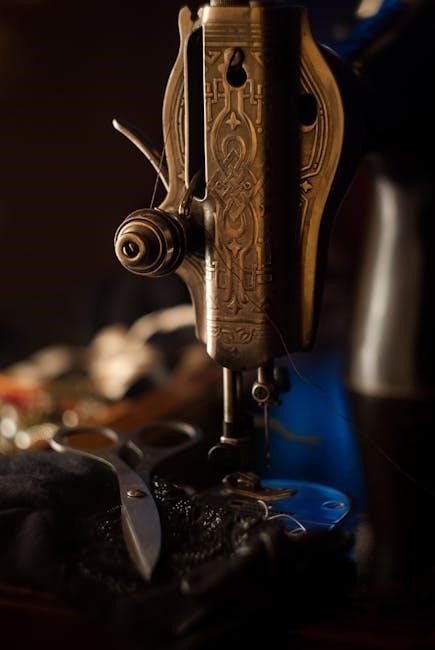
The Singer old sewing machine manual is an essential guide for operating, maintaining, and troubleshooting vintage Singer sewing machines. It provides detailed instructions for models like the 15-91, 201K, and Featherweight, ensuring users can unlock their machine’s full potential. This comprehensive resource is perfect for enthusiasts and collectors seeking to restore or utilize their vintage Singer sewing machines effectively.
Overview of the Importance of Manuals for Vintage Sewing Machines
Vintage sewing machine manuals are indispensable for enthusiasts and collectors, offering comprehensive guidance on setup, maintenance, and troubleshooting. They provide detailed insights into stitch capabilities, operational tips, and repair solutions specific to older models. These manuals, often scanned from original documents, ensure authenticity and practicality. For collectors, they aid in restoring machines to their former glory, while for crafters, they unlock creative possibilities. Accessing these resources helps preserve the functionality and value of vintage Singer sewing machines, making them usable for modern projects while honoring their historical significance.
Key Features of Singer Old Sewing Machine Manuals
Singer old sewing machine manuals are renowned for their detailed instructions and compatibility with iconic models like the 15-91, 15K, and Featherweight. These manuals, often available as PDFs, provide comprehensive guidance on stitch capabilities, maintenance routines, and troubleshooting common issues. They include parts lists, diagrams, and step-by-step repair instructions, ensuring users can restore and operate their vintage machines effectively. Many manuals are scanned from original documents, preserving their authenticity and practical value. Whether for collectors or crafters, these resources are essential for unlocking the full potential of Singer’s timeless sewing machines while maintaining their historical integrity and functionality.

History of Singer Sewing Machines
Founded in 1851 by Isaac Singer, Singer Sewing Machines revolutionized sewing with the first practical sewing machine in 1856. Over the years, Singer became a global leader in sewing innovation.
Early Models and Their Significance
The early Singer sewing machine models, such as the 15-91 and 66K, introduced in the early 20th century, were groundbreaking for their durability and versatility. These machines offered various stitch options and were revolutionary for both domestic and industrial use. Their significance lies in their role in establishing Singer as a leader in sewing technology, providing efficient solutions that transformed sewing practices globally. These models laid the foundation for Singer’s legacy and remain popular among collectors and enthusiasts today, with their manuals still sought after for maintenance and operation.
Evolution of Singer Sewing Machines Over the Years
Singer sewing machines have undergone remarkable evolution since their inception in the 19th century. Early models, like the treadle-operated Singer 15-91, emphasized durability and simplicity, while later models introduced electric power and automatic features. The 20th century saw advancements like zigzag stitching and electronic controls, enhancing versatility for both home and industrial use. Modern Singer machines incorporate computerized designs, touchscreen interfaces, and advanced stitch libraries. This continuous innovation has cemented Singer’s reputation as a leader in sewing technology, ensuring their vintage models remain cherished by collectors while their newer machines cater to contemporary sewing needs.
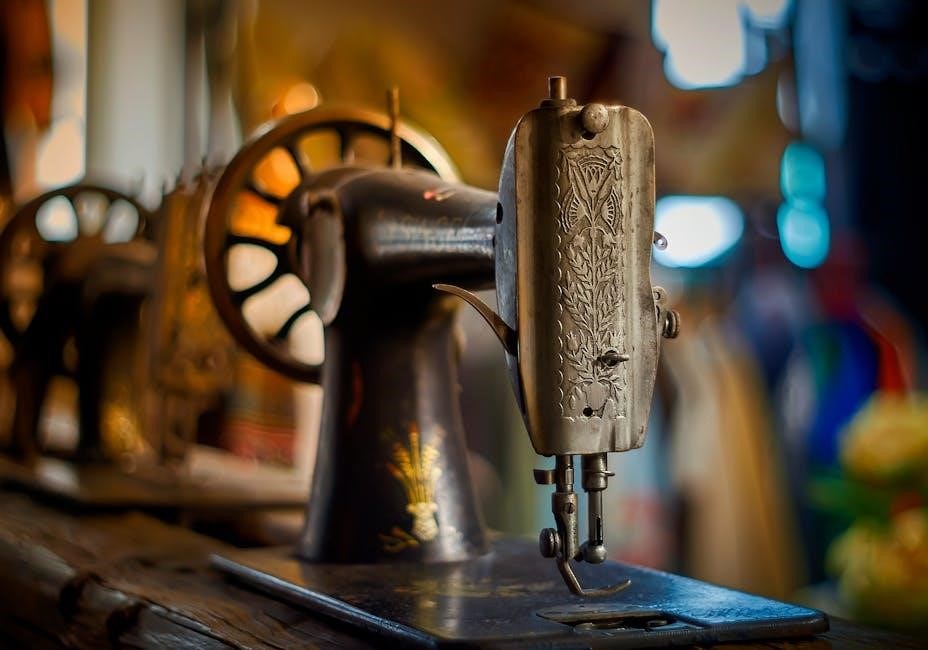
Key Features and Benefits of Old Singer Sewing Machines
Old Singer sewing machines are renowned for their durability, versatility, and ease of use. They offer a range of stitch options, robust construction, and timeless reliability, making them a favorite among sewists and collectors alike.
Stitch Type Capabilities
Old Singer sewing machines are equipped with versatile stitch capabilities, catering to various sewing needs. Models like the 15-91 and 201K offer straight stitch, reverse stitch, and decorative stitching options. The Featherweight series excels in precision stitching, ideal for quilting and delicate fabrics. These machines support both manual and automatic stitching, providing users with flexibility and control. Their robust mechanisms ensure consistent stitch quality, making them suitable for both everyday use and intricate projects. This versatility has made vintage Singer machines a preferred choice for sewists seeking reliability and creative freedom.
Durability and Build Quality
Old Singer sewing machines are renowned for their exceptional durability and robust build quality. Constructed with heavy-duty metal frames, these vintage models are designed to withstand decades of use. The 15-91, 201K, and Featherweight series are particularly praised for their longevity. Many machines remain functional today, a testament to their superior craftsmanship. Their mechanical components are built to last, with minimal plastic parts, ensuring reliability and performance. This durability makes them a favorite among collectors and sewists who value machines that can endure the test of time while maintaining consistent stitching and operation.
Compatibility with Modern Sewing Needs
Old Singer sewing machines, such as the 15-91 and 201K models, are surprisingly compatible with modern sewing needs. Their robust construction and versatile stitch capabilities allow them to handle a variety of fabrics and projects. While they may lack some advanced digital features, their mechanical simplicity makes them reliable for basic and decorative stitching. Adapters and conversion kits are available to ensure compatibility with modern sewing needles and accessories. With minimal adjustments, these vintage machines can seamlessly integrate into contemporary sewing workflows, making them a practical choice for both enthusiasts and professionals seeking timeless functionality.
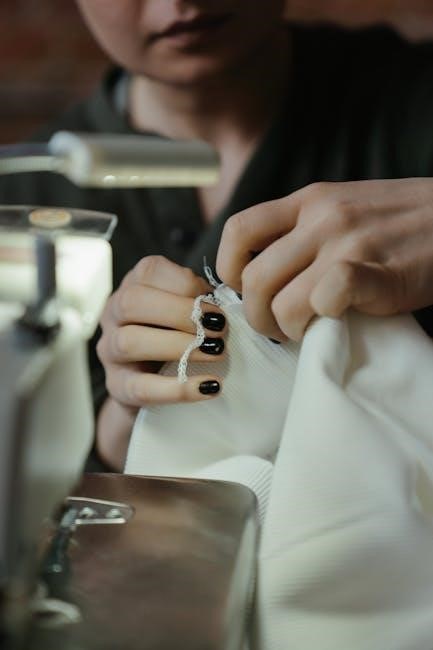
Understanding the Singer Old Sewing Machine Manual
The Singer old sewing machine manual is a comprehensive guide covering setup, operation, and maintenance for models like the 15-91, 201K, and Featherweight. Available as free PDF downloads from Singer’s official website and third-party resources, these manuals ensure seamless functionality and troubleshooting for both vintage and modern sewing needs.
Structure and Content of the Manual
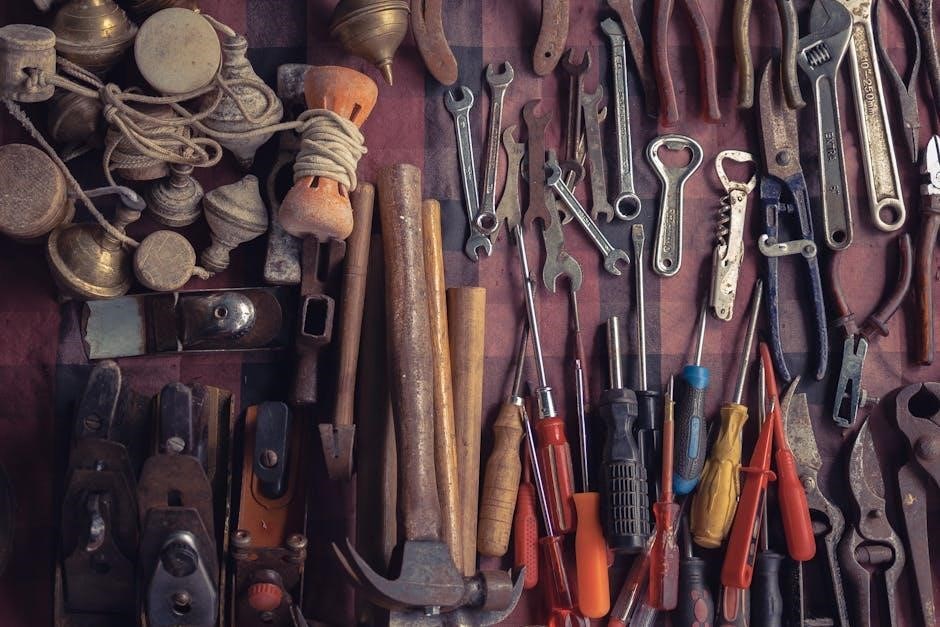
The Singer old sewing machine manual is organized into clear sections, starting with setup and operation, followed by maintenance and troubleshooting. It includes detailed diagrams, parts lists, and step-by-step instructions for models like the 15-91, 201K, and Featherweight. The manual covers basic functions, stitch types, and advanced features, ensuring users can maximize their machine’s capabilities. Available as PDF downloads, these guides are suitable for multiple models, making them a valuable resource for both vintage enthusiasts and modern sewists. The content is designed to be user-friendly, with visuals and explanations to aid in understanding and repair.
How to Navigate the Manual Effectively
Start by reviewing the table of contents to locate specific sections quickly. Focus on chapters relevant to your machine model, such as setup, maintenance, or troubleshooting. Use the index to find detailed explanations of features or repairs. Pay attention to diagrams and illustrations, as they provide visual guidance for complex tasks. Highlight or bookmark key pages for easy reference. For older models, cross-reference parts lists to ensure compatibility. By systematically exploring the manual, you can efficiently master your Singer sewing machine’s operation, maintenance, and repair, maximizing its performance and longevity.

Popular Models Covered in the Manual
The manual covers popular models like the Singer 15-91, 15K, 66K, 99K, 201K, and Featherweight, each well-documented with specific instructions.
Singer 15-91, 15K, and 66K Models
The Singer 15-91, 15K, and 66K models are highly sought-after vintage sewing machines, renowned for their durability and versatility. These models are well-documented in the manual, providing detailed instructions for operation, maintenance, and troubleshooting. The Singer 15-91 is a treadle model, while the 15K and 66K are portable machines with robust build quality. The manual includes parts lists, stitch guides, and repair tips, making it an indispensable resource for collectors and users. These models remain popular among sewing enthusiasts due to their reliability and timeless functionality.
Singer 99K and 201K Models
The Singer 99K and 201K models are iconic vintage sewing machines, highly prized by collectors and sewists alike. Produced in 1950, these models were available in both hand-crank and electric versions, offering versatility for various sewing tasks. Known for their robust build and precise stitching, the 99K and 201K are popular for their reliability and ease of use. The manual provides detailed guidance on operation, maintenance, and repair, ensuring these machines remain functional for generations. Their timeless design and durability make them a favorite among enthusiasts, with the manual serving as a vital resource for preserving their legacy.
Singer Featherweight Models
The Singer Featherweight models are renowned for their portability and lightweight design, making them a favorite among quilters and sewists. First introduced in the 1930s, these machines are celebrated for their compact size, durability, and precise stitching capabilities. The Featherweight’s manual offers detailed instructions for maintenance, troubleshooting, and operation, ensuring optimal performance. With their elegant design and reliable function, Singer Featherweight machines are highly sought after by collectors and users alike. The manual is an invaluable resource for preserving these vintage gems, allowing them to continue serving sewists for years to come.

Downloading and Accessing the Manual
Download Singer old sewing machine manuals in PDF format for free from reliable sources, including Singer’s official website and third-party resources like Ismacs and Diplodocs.
Free PDF Downloads from Reliable Sources
Access free Singer old sewing machine manuals in PDF format from trusted sources like Singer’s official website, Ismacs, and Diplodocs. These platforms offer downloadable manuals for various vintage models, including the Singer 15-91, 201K, and Featherweight. Manuals are scanned from original documents and converted to PDF for easy viewing and printing. Users can find comprehensive guides covering operation, maintenance, and troubleshooting. Some manuals are large files, ensuring detailed instructions for optimal use. These resources are invaluable for collectors and enthusiasts seeking to restore or operate their vintage Singer sewing machines effectively.
Official Singer Website and Third-Party Resources
The official Singer website offers a wealth of resources, including free PDF downloads of sewing machine manuals for both new and vintage models. Users can access comprehensive guides for models like the Singer 15-91, 201K, and Featherweight directly from Singer’s support section. Additionally, third-party platforms such as Ismacs and Diplodocs provide scanned and downloadable versions of original Singer manuals. These resources are particularly useful for enthusiasts and collectors, ensuring that vintage Singer sewing machines can be operated, maintained, and restored with ease. They also include detailed parts lists and troubleshooting tips for optimal performance.
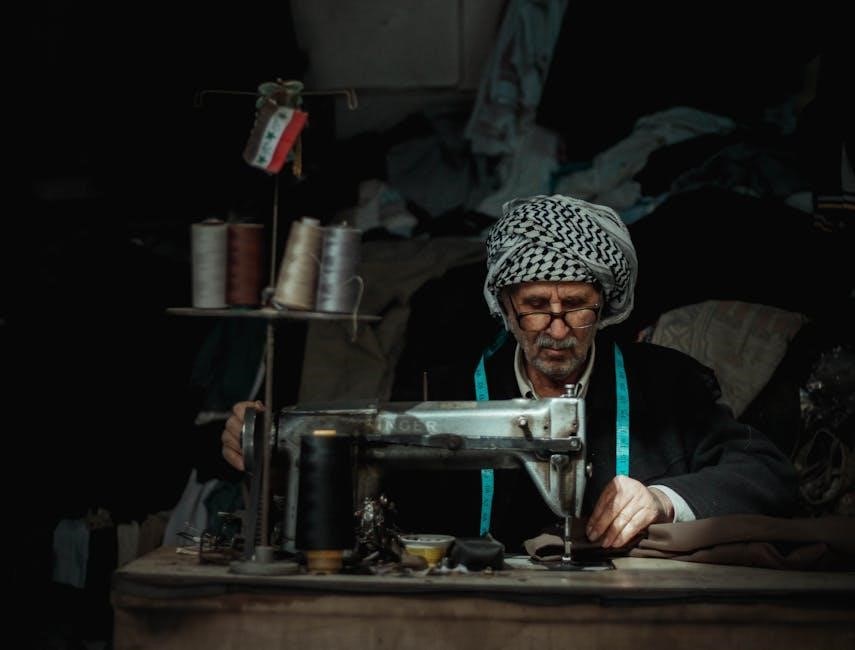
Maintenance and Troubleshooting Tips
Regular maintenance, such as oiling and cleaning, ensures smooth operation. Troubleshooting common issues like thread jams or needle alignment problems can be addressed using the manual’s guidance for optimal performance.
Regular Maintenance Practices
Regular maintenance is crucial for the longevity and optimal performance of your Singer old sewing machine. Start by cleaning the machine thoroughly, removing dust, lint, and debris from the bobbin area, tension discs, and feed dogs. Lubricate moving parts with sewing machine oil to ensure smooth operation. Check and replace the needle regularly to prevent damage. Additionally, inspect the belt and tension springs for wear and tear. Refer to the manual for specific lubrication points and cleaning techniques tailored to your model. Proper care will keep your vintage Singer sewing machine running efficiently and reliably for years to come.
Common Issues and Solutions
Common issues with Singer old sewing machines include thread jams, inconsistent stitching, and mechanical noise. To address these, refer to the manual for guidance on cleaning and lubricating internal components. For thread jams, gently remove the bobbin and check for tangled threads. Inconsistent stitching may result from incorrect tension settings or a dull needle, which should be replaced. Mechanical noise could indicate worn or loose parts, such as belts or gears, requiring adjustment or replacement. Regularly consulting the manual ensures proper troubleshooting and maintenance, keeping your vintage Singer sewing machine in optimal working condition and extending its lifespan.
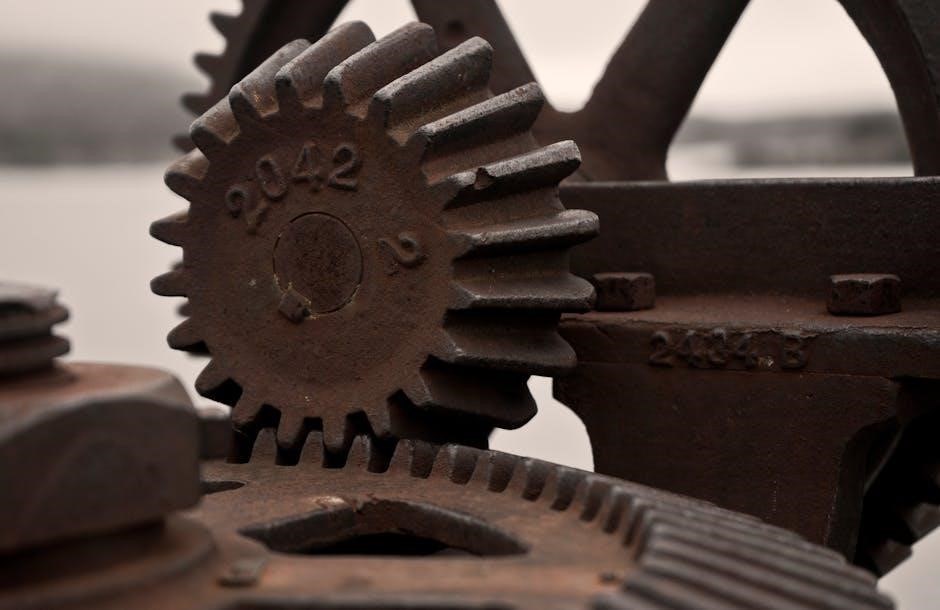
Vintage Singer Sewing Machine Collectibility
Vintage Singer sewing machines are highly sought after by collectors due to their historical significance, durability, and nostalgic appeal. Models like Featherweight and 15-91 are particularly prized for their craftsmanship and functionality, making them valuable additions to any collection. The presence of original accessories and provenance can further enhance their collectibility and market value, attracting both enthusiasts and historians who appreciate these timeless pieces of sewing history.

Factors Affecting the Value of Vintage Machines
The value of vintage Singer sewing machines is influenced by several factors, including rarity, condition, and historical significance. Models like the Featherweight and 15-91 are highly sought after due to their exceptional craftsmanship and functionality. Machines in excellent working condition, with original parts and accessories, command higher prices. Provenance, such as a machine’s ownership history, can also enhance its value. Additionally, the presence of original manuals or documentation further increases desirability. Restoration quality and the machine’s aesthetic appeal play a role, as do market demand and collector interest. These factors collectively determine the worth of vintage Singer sewing machines.
Restoration and Preservation Tips
Restoring vintage Singer sewing machines requires careful attention to detail. Start by consulting the original manual for guidance on disassembling and cleaning parts. Use gentle cleaning methods to avoid damaging finishes or mechanical components. Lubricate moving parts regularly to maintain functionality. Avoid harsh chemicals, as they can harm the machine’s surfaces. For complex repairs, seek help from experienced restorers; Preserve original accessories and documentation, as they add value. Store machines in a dry, cool environment to prevent rust and deterioration. Consider using reproduction parts if originals are unavailable. Proper restoration ensures these vintage machines remain functional and retain their historical charm for future generations.
The Singer old sewing machine manual is a vital resource for enthusiasts, offering comprehensive guidance for vintage models. Its detailed instructions ensure optimal performance and longevity.
Final Thoughts on the Singer Old Sewing Machine Manual
The Singer old sewing machine manual stands as an indispensable resource for enthusiasts and collectors. It provides detailed guidance for vintage models, ensuring proper operation and maintenance. With its comprehensive instructions, the manual helps users unlock the full potential of their machines. Whether restoring a Featherweight or troubleshooting a 99K, the manual offers timeless value. Its availability in PDF format makes it accessible to modern users, preserving the legacy of Singer’s iconic sewing machines. For anyone passionate about vintage sewing, this manual is a must-have, offering insights and practical advice to keep these classic machines in optimal condition for years to come.
Encouragement to Explore and Utilize the Manual
Exploring and utilizing the Singer old sewing machine manual is a rewarding experience that unlocks the full potential of your vintage machine. Whether you’re a seasoned sewer or a new collector, the manual provides invaluable insights into operation, maintenance, and troubleshooting. Its detailed instructions ensure you master every feature, from stitch capabilities to accessory usage. By embracing this resource, you can preserve your machine’s functionality and extend its lifespan. Dive into the world of Singer’s timeless craftsmanship and enhance your sewing journey with the knowledge and confidence the manual provides.